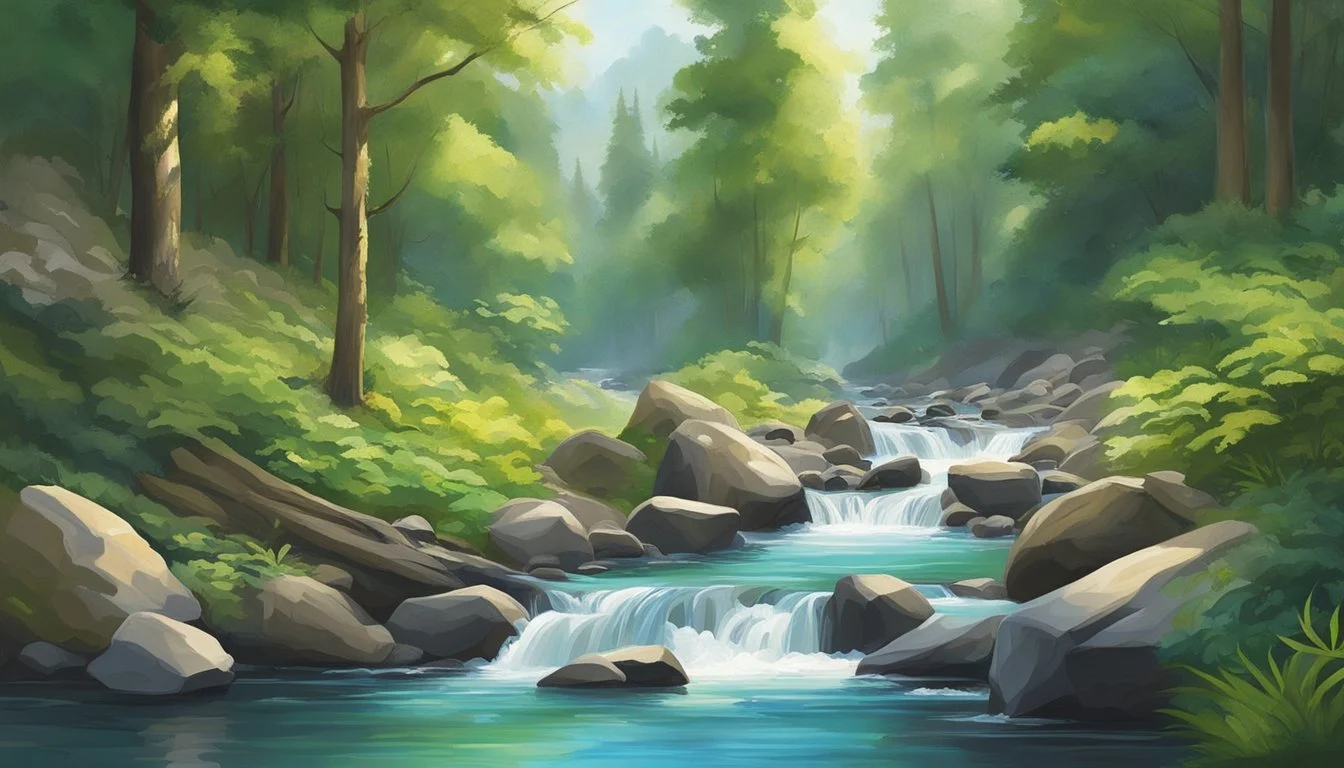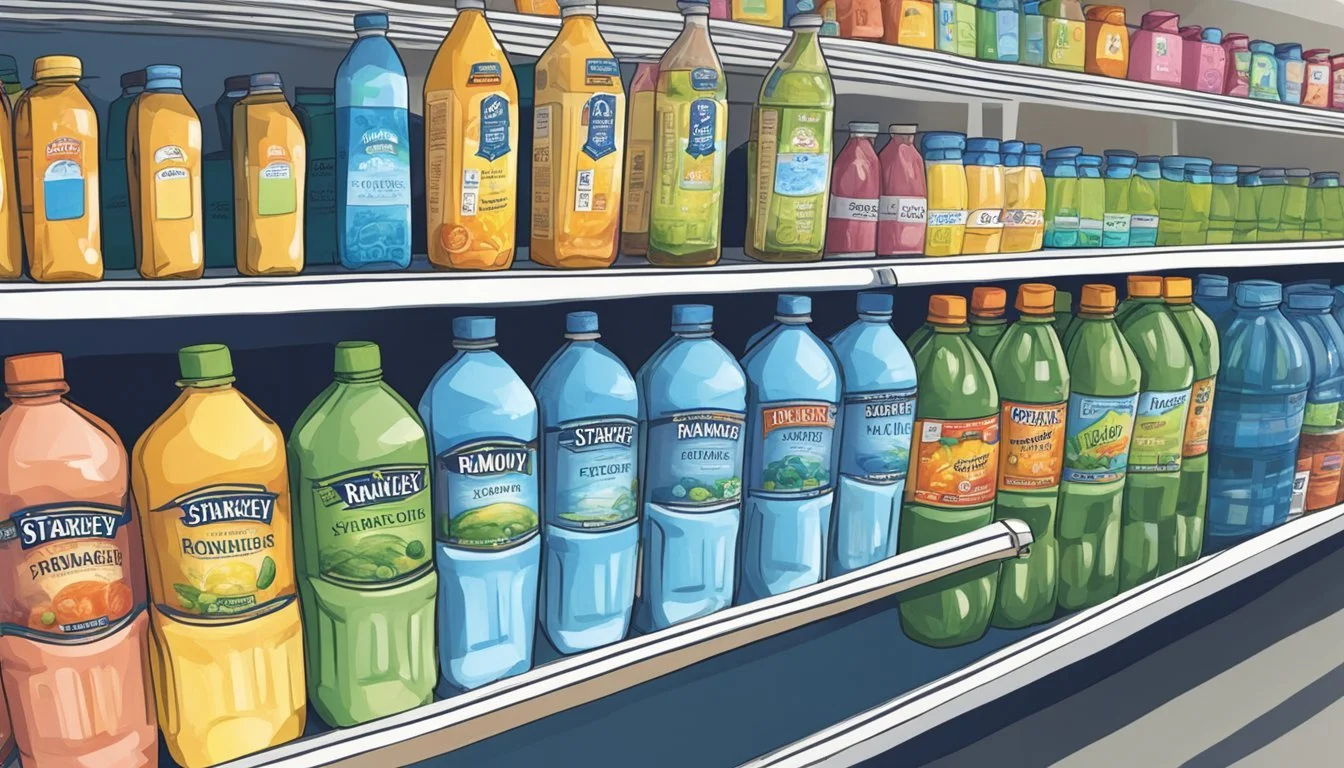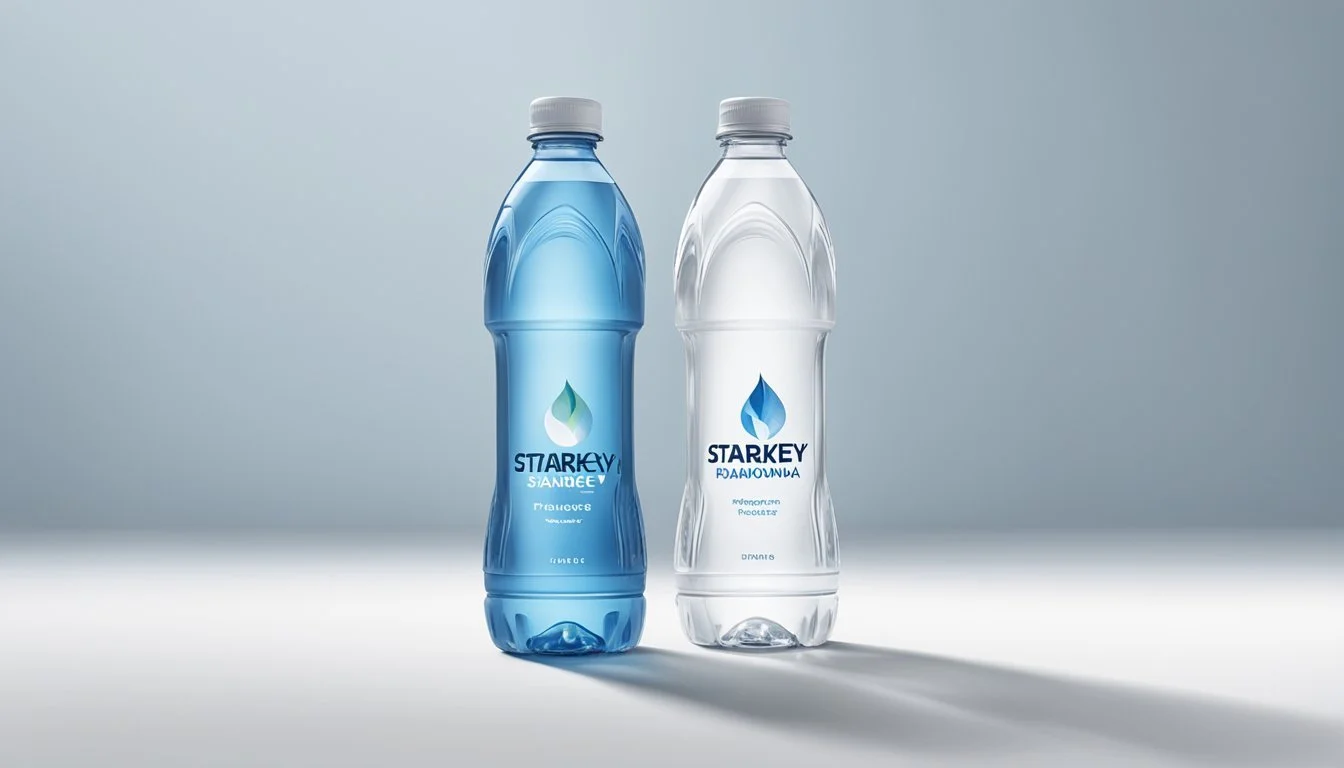Starkey vs. Ramona
Evaluating the Superior Bottled Water Choice
When it comes to bottled water brands, Starkey and Ramona stand out in many consumers' minds. Starkey, sourced from deep geothermal springs in Idaho, boasts a unique mineral composition that gives it a distinct taste. On the other hand, Ramona sources its water from natural springs in California, offering a clean and refreshing option.
Starkey's subtle mineral taste appeals to those who enjoy a slightly unique flavor, while Ramona excels in delivering crisp, pure hydration. This difference in taste and source makes each brand appealing for different reasons.
Comparing the two, one must consider personal preference for water flavor and mineral content. Starkey might attract those with a palate for complex tastes, whereas Ramona’s straightforward clean taste might be preferable for others.
The Importance of Water Quality
Water quality plays a crucial role in ensuring safe consumption and maintaining good health. Key considerations include adherence to safety standards, thorough evaluation of contaminants, and ensuring the purity of the water.
Safety Standards and Regulations
Stringent safety standards and regulations govern bottled water quality. Agencies like the FDA and EPA set benchmarks for permissible contaminant levels.
These guidelines ensure that bottled water is free from harmful substances such as bacteria, chemicals, and heavy metals. Compliance with these standards is monitored through regular testing.
Quality reports often provide consumers with data on the water's components, giving transparency about its safety and purity.
Evaluating Contaminants and Purity
Assessing water for contaminants involves checking for substances like lead, arsenic, and microbial pathogens. High levels of these can pose significant health risks.
Purity is also judged by the absence of unwanted minerals and chemicals. Bottled water brands often highlight their purification processes, like reverse osmosis or UV filtration.
Choosing a brand that shares detailed quality reports can provide additional assurance about the water’s cleanliness and safety.
Source and Filtration Process
Starkey and Ramona bottled water brands source their water differently and employ varied filtration techniques, impacting taste, purity, and environmental footprint.
Natural Sources and Environmental Impact
Starkey sources its water from a geothermal spring located in Idaho. This natural spring water is unique, originating from deep within the earth and naturally emerging warm. The extraction from this geothermal source ensures a rich mineral content and a fresh taste profile.
Ramona relies on groundwater sources, specifically targeting areas known for high purity. The water is drawn from underground aquifers, minimizing environmental disruption. The careful selection of these pristine water sources underscores Ramona's commitment to purity and environmental sustainability.
Techniques of Filtration and Purification
Starkey employs minimal filtration to preserve the natural minerals present in its spring water. The water undergoes a careful filtration process to remove any potential contaminants while maintaining the beneficial minerals. This approach ensures the water retains its natural taste and health benefits without significant alteration.
Ramona uses a more extensive purification process, including reverse osmosis and additional filtration stages. The reverse osmosis process eliminates impurities and contaminants, producing purified water with a neutral pH. The final product is a clean, crisp-tasting water that appeals to those seeking high purity levels.
Together, these processes highlight the unique methodologies of each brand, reflecting their distinct principles and consumer needs.
Flavor, Texture, and Mineral Content
Starkey and Ramona are two premium bottled water brands that offer distinct experiences in flavor, texture, and mineral content. While both aim to deliver a high-quality drinking experience, their unique characteristics set them apart.
The Role of Minerals in Taste
Mineral content plays a significant role in defining the taste of bottled water. Starkey water is known for its naturally balanced mineral profile, which includes calcium, magnesium, and silica. These minerals give Starkey a smooth taste and a slightly alkaline pH.
Ramona water, sourced from pristine springs, often exhibits a crisp and invigorating taste with a subtle mineral presence. The natural filtration process of Ramona’s source contributes to its clean taste, enhanced by essential electrolytes that provide a refreshing experience.
The presence of these minerals not only affects flavor but also impacts the overall hydration experience by delivering trace nutrients beneficial to the body.
The Texture: Mouthfeel of Different Waters
The texture, or mouthfeel, of bottled water can vary significantly. Starkey offers a velvety and smooth mouthfeel, attributed to its unique mineral composition. This smoothness is often favored by those who prefer a less noticeable presence of minerals when drinking water.
Ramona, on the other hand, has a crisp texture that provides a stimulating mouthfeel. This crispness results from its natural mineral content and filtration process, leading to a more pronounced and invigorating sensation as the water moves across the palate.
In comparison to Starkey, Ramona's texture can be refreshing for those who enjoy a more lively drinking experience, free from any lingering aftertaste.
Comparative Taste Test Analysis
Starkey and Ramona compete fiercely in the premium bottled water market. Both brands have distinct flavor profiles that attract different consumer preferences, making a head-to-head taste test essential to determine which is superior.
Methodology of Taste Testing
The taste test was conducted with a diverse group of participants, ensuring a variety of taste buds and preferences.
Participants rated the waters on several criteria: flavor, crispness, refreshing quality, and aftertaste. Each participant sampled Starkey and Ramona in identical, unmarked cups to eliminate bias.
The waters were served at the same temperature to maintain consistency. Judges recorded their impressions immediately after tasting to capture initial reactions accurately.
Consumer Preferences and Taste Profiles
Participants noted distinct differences between Starkey and Ramona. Starkey was often described as having a mineral-rich flavor with a refreshing finish, making it a favorite among those who enjoy a robust water taste.
On the other hand, Ramona was praised for its crisp, clean taste and exceptionally smooth aftertaste, appealing to consumers who prefer subtler flavors.
Starkey:
Flavor: Mineral-rich
Crispness: Moderate
Refreshing Quality: High
Aftertaste: Noticeable
Ramona:
Flavor: Subtle and clean
Crispness: High
Refreshing Quality: High
Aftertaste: Minimal
These profiles illustrate that while both waters have their merits, consumer preferences can significantly impact the choice between Starkey and Ramona.
Packaging and Environmental Considerations
Packaging and material choice play a significant role in the environmental footprint of bottled water. Different materials such as plastic and glass offer varied impacts on carbon emissions and recyclability.
Plastic vs Glass: A Comparative Review
Plastic bottles are lightweight and cost-effective, making them popular for bottled water. However, their environmental impact is substantial. Plastic production releases significant carbon emissions; for every 50 oz of bottled water, between 1.6 and 22 oz of CO2 are emitted.
Glass bottles, being heavier, result in higher transportation emissions but are less harmful when produced. Despite their weight, glass is more sustainable as it can be recycled indefinitely without degrading quality. Still, the higher energy requirements for producing and transporting glass make its overall carbon footprint comparable to plastic in some cases.
Recyclability and Eco-Friendly Alternatives
Plastic bottles, predominantly made from PET, can only be recycled a limited number of times before quality diminishes. This leads to persistent plastic waste in the environment. Glass bottles, on the other hand, maintain their integrity through continuous recycling cycles, making them a viable option for reducing long-term waste.
Boxed water packaging has emerged as a potential eco-friendly alternative. It uses less plastic than conventional plastic bottles, but its effectiveness relies heavily on the presence of carton recycling facilities. Large plastic jugs are another alternative, reducing single-use packaging in scenarios where tap water is not available. These alternatives present opportunities to minimize packaging waste and carbon emissions.
Pricing and Consumer Demand
Starkey and Ramona bottled waters differ significantly in pricing and market demand. Understanding these differences gives insight into their market positions.
Market Demand for Various Brands
Starkey Market demand for Starkey bottled water is high due to its unique origin from geothermal springs. It is sought after by consumers seeking premium and natural water. Its limited availability in grocery stores adds an exclusive appeal.
Ramona Ramona water targets a niche market focused on purity. Although it is priced higher, around $1 to $3 per bottle, it appeals to consumers prioritizing quality over cost. Availability in stores is more limited compared to other brands, which influences its consumer reach and overall demand.
Comparative Cost Analysis
Starkey Starkey bottled water positions itself in the premium segment. Its cost reflects the source and quality, often found at higher price points in specialty stores rather than standard grocery stores. Prices can range significantly higher compared to mass-market brands.
Ramona Ramona stays within a price range of $1 to $3 per bottle, which is higher than many competitors. This premium cost is justified by its focus on pure and premium sourcing. The higher price tag and limited market availability somewhat restrict its consumer base.
Both brands cater to premium market segments, but their unique selling points align differently with consumer demands and price expectations.
Brand Analysis: Starkey vs. Ramona
Starkey and Ramona are two prominent names in the bottled water industry. Each brand brings unique characteristics and market positioning that appeal to different consumer preferences.
Company Profiles and Water Origin
Starkey is owned by Whole Foods Market, reflecting its commitment to quality and natural sourcing. The water originates from an ancient geothermal spring located in Idaho, USA. This remarkable origin ensures a rich mineral content, contributing to its unique taste and health benefits.
Ramona is a relatively newer brand gaining popularity for its crisp flavor and wide availability. Its water source is carefully selected springs, ensuring purity and consistency. This strategic sourcing from pristine environments positions Ramona as a trusted name in bottled water.
Unique Selling Propositions of Starkey and Ramona
Starkey stands out for its high mineral content, drawing from geothermal springs that imbue the water with calcium, magnesium, and sodium. This mineral richness provides health benefits and a distinctive, smooth taste. The brand's association with Whole Foods Market further reinforces its image of quality and natural sourcing.
Ramona’s primary selling point is its crisp taste and widespread availability. Known for its clean and refreshing profile, it appeals to consumers looking for a reliable and pleasant-tasting water option. Ramona's commitment to using high-quality, spring-sourced water ensures a consistent product that meets consumer expectations.
Expert Opinions and Water Sommelier Insights
Expert opinions and water sommelier insights provide valuable perspectives on the comparison between Starkey and Ramona bottled waters. These insights help consumers make informed decisions based on taste, quality, and overall experience.
Water Sommeliers on Bottled Water Choices
Water sommeliers bring a wealth of knowledge to the table, offering nuanced opinions on various bottled waters. They emphasize the importance of factors such as mineral content, source, and processing methods in determining water quality.
For Starkey, water sommeliers highlight its alkaline nature and high mineral content, which contribute to a distinctive and smooth taste. On the other hand, Ramona is often praised for its crisp, clean profile and balanced mineral composition.
Expert Recommendations
Experts recommend Starkey for those seeking water with higher alkalinity and a full-bodied flavor. It's especially favored by individuals who appreciate water with a more pronounced mineral presence.
Ramona, with its clean and refreshing taste, is typically recommended for daily hydration and for pairing with meals, given its balanced and neutral mineral profile. This makes it a versatile choice suitable for a wide range of preferences.
Understanding these expert perspectives can assist consumers in selecting the bottled water that best meets their needs and taste preferences.
The Bottom Line
Comparing Starkey and Ramona bottled waters reveals key differentiators in quality and convenience.
Final Verdict on Quality and Convenience
When analyzing quality, Starkey water stands out for its high mineral content and natural spring source from Idaho. This gives it a crisp, refreshing taste. Ramona water, sourced from local springs in California, offers a clean, smooth taste but with fewer minerals.
Convenience-wise, Ramona excels with its eco-friendly packaging options. They provide both glass and recyclable plastic bottles, appealing to environmentally conscious consumers. Starkey, on the other hand, primarily uses durable plastic packaging which is convenient for on-the-go usage but falls short on sustainability.
Both brands deliver in terms of accessibility, being widely available in supermarkets and online. However, Starkey's higher price point may be a consideration for budget-conscious buyers.
Future of Bottled Water: Trends and Predictions
Looking ahead, sustainability will be a central theme in the bottled water industry. Companies are expected to innovate with biodegradable and reusable packaging. This might affect Ramona positively due to its existing commitment to eco-friendly practices.
Additionally, health-conscious trends are driving demand for mineral-rich waters. Starkey, with its naturally high mineral content, is likely to see continued interest from consumers prioritizing health benefits.
Technological advancements will also play a role. The integration of QR codes on bottles for tracking and more personalized consumer experiences is anticipated. Both Starkey and Ramona could benefit from these trends if they adapt quickly.
In summary, the bottled water market will evolve with a focus on sustainability and health. Starkey and Ramona must align their strategies to these trends to sustain and grow their consumer base.
More About Starkey
Icelandic Glacial vs Starkey: Which Bottled Water is Better?
Mountain Valley Spring Water vs Starkey: Which Bottled Water is Better?
Starkey vs Kirkland Signature: Which Bottled Water is Better?
Starkey vs Richard's Rainwater: Which Bottled Water is Better?
Starkey vs Whole Foods Italian Still Mineral water: Which Bottled Water is Better?








